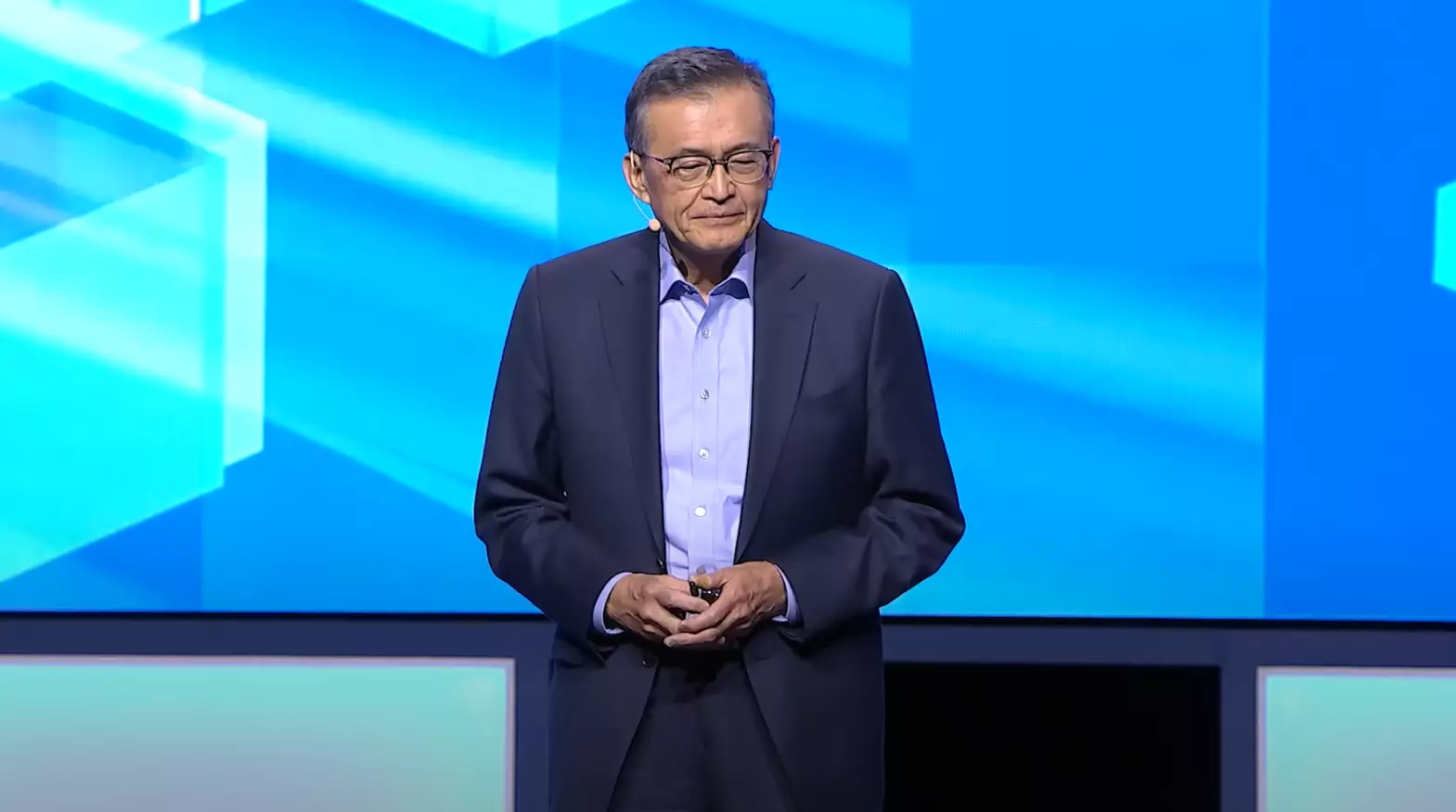The recent earnings call led by Intel’s new CEO, Lip-Bu Tan, marks a pivotal moment for the tech giant, which has struggled to keep pace with its competitors. As Tan stepped into the spotlight for his initial presentation, he articulated a bold plan to overhaul the company’s structure and strategic direction. The call signaled not just a shift in leadership, but a clarion call for innovation and revitalization within Intel—a company that has found itself overshadowed in recent years, especially by AI hardware leaders like Nvidia.
Tan’s promise to “flatten” the management hierarchy and initiate a mandatory four-day workweek is more than just an organizational tweak; it reflects a deep-seated recognition of the creative stagnation that has hindered Intel’s potential. By reducing bureaucratic layers and encouraging regular in-office collaboration, Tan aims to cultivate an environment ripe for innovation. This approach underlines a crucial belief: that agility is essential for technological advancement and market competitiveness.
Strategic Partnerships: The Pathway to AI Dominance
One of the most tantalizing aspects of the earnings call was Tan’s reference to forging a partnership with an unspecified industry leader in AI. This statement invites speculation over which entity could enter the Intel fold. The most prominent candidate is undoubtedly Nvidia, which has solidified its place at the forefront of AI through its advanced Blackwell architecture. If Tan envisions a collaboration with Nvidia, it could enable Intel chips to integrate into Nvidia’s AI solution ecosystems, positioning Intel as a significant contributor to advanced AI processing capabilities.
Alternatively, there remains a possibility that Tan may be eyeing partnerships with companies pioneering AI models, such as OpenAI. This would signify a shift toward not merely competing in hardware but also embracing bespoke silicon solutions designed explicitly for AI applications. However, Tan has been candid in warning that these transformations are not instantaneous; the road to establishing Intel as a preeminent player in AI hardware is laden with challenges. “This is not a quick fix,” he emphasized, asserting the need for time and sustained effort to realign the company’s portfolio for emerging AI demands.
Will Intel Forge Alliances or Be Lost in the Shuffle?
During the call, Tan mentioned discussions with industry stalwarts like Morris Chang and C.C. Wei from TSMC, hinting at potential collaborative ventures. Many within the tech community are left pondering: Could a partnership imply TSMC stepping in to manage Intel’s fabrication facilities? Such a move could significantly reshape the semiconductor landscape, allowing Intel better leverage by tapping into TSMC’s unsurpassed manufacturing prowess. Yet, while the prospect of a joint venture tantalizes, it also raises vital questions about Intel’s autonomy and future capabilities.
The challenge here is the necessity for Intel to demonstrate its relevance and ability to adapt. Tan hinted at significant organizational cuts, suggesting that a leaner workforce may be imperative to restore Intel’s innovative capital. This potential reduction feeds into broader industry narratives about the need for efficiency in the face of heightened competition. However, such drastic measures could contribute to further instability if not managed delicately.
A New Work Culture: Teamwork as a Cornerstone
Tan’s decisive moves to reintroduce a structured work environment underline a vital tenet of successful innovation: teamwork. The reinstatement of in-person meetings four days a week, set to roll out in Q3 2025, is a testament to a post-pandemic shift in corporate philosophy. Tan understands that spontaneous collaboration often occurs organically when team members are physically present. Transitioning to a more engaged workforce may potentially elevate productivity levels and ignite the types of innovative ideas that have recently eluded the company.
However, the reimplementation of office requirements may meet resistance from employees accustomed to remote flexibility. Tan will need to balance this transition carefully, proving that the benefits of in-person collaboration justify the inconvenience of commuting and office presence. The question remains whether this strategy will yield the desired result or whether it inadvertently stifles the very innovation it seeks to cultivate.
The Long and Winding Road Ahead for Intel
While Lip-Bu Tan has verbalized optimistic intentions and strategic adjustments, the earnings call ultimately illuminated a crucial fact: Intel is at a crossroads. The challenges it faces are substantial, including fierce competition from companies that have arguably leapfrogged it in technology and innovation. As he reaffirmed Intel’s commitment to launching the next-generation Panther Lake CPU, it became evident that the company is heavily reliant on these future components for rekindling marketplace confidence.
What remains unclear, though, is how convincingly Tan can portray a promised turnaround. Will he transform Intel into a nimble, AI-focused entity that can compete with the likes of Nvidia and OpenAI, or will the company continue to flounder in a fierce landscape? As he navigates these significant changes and aspirations, the critical watchword is execution—how effectively Tan can realize this vision will determine Intel’s fate in the fast-evolving world of AI technology.


Leave a Reply